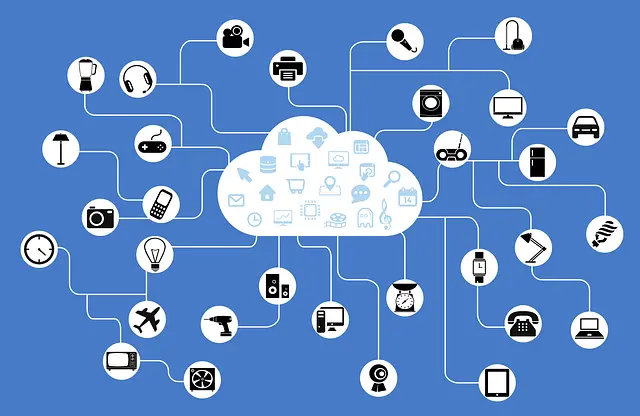In the modern era, we find ourselves surrounded by an extraordinary amount of information generated at a very fast rate. This huge amount of data is commonly known as Big Data. Different characteristics of big data represent the vast amount, speed, and range of information available to us.

Big data is a essential ability and challenge that requires creative ways to gather, analyze, and form conclusions from data larger than what can be handled by traditional data processing tools. Big data is a key component of technology developments for multiple industries and opening up possibilities for creativity, innovation, and decision-making.
In this article we will learn in detail what is big data, its meaning, definition, characteristics of big data, and types of big data along with it’s challenges. Let’s begin.
You May Also Like :
What Is Big Data
The big data definition can be stated as large volumes of structured, semi-structured, and unstructured data generated at an exponential pace from various sources such as social media, sensors, transactions, and more.
In simple words big data meaning refers to really large sets of information that are too big and complex for traditional methods to handle effectively. Big data includes a variety of data types, from numbers and text to pictures and videos, and comes in quickly from sources like social media, sensors, and online activities.
Recently, IEEE Big data 2023, an International conference on Big data was held from Dec 15-18 in Sorrento, Italy. A Special Meeting was conducted on the privacy and security of big data.
The international conference IEEE Big data 2023 focused on privacy and security research issues in the context of Big Data, an active and demanding research environment that is at the center of the Database research community. It was concluded that these issues are fundamental to this research context.
Now let’s have a look at the different characteristics of big data.
Characteristics Of Big Data
The characteristics of big data include several key attributes, commonly known as the “Vs.” These characteristics are important for understanding the nature of Big Data. These characteristics of big data are –
Volume
As the name itself suggest, big data involves large amounts of information. Terabytes, petabytes, and even larger amounts of data are possible. It needs specialized processing and storage infrastructure to handle such massive quantities.
Example – Google processes over 3.5 billion searches per day, leading to an annual estimate of around 1.28 trillion searches which is a really big data.
Velocity
Other characteristics of big data include Velocity. This refers to the speed at which data is generated, processed, and made available for analysis. With real-time data sources like social media, sensors, and IoT devices, data is often produced at high speeds, requiring quick processing capabilities.
Data is flowing continuously in large quantities. This defines the data’s potential, or how quickly the data can be created and processed to satisfy needs.
Example – Facebook’s user base is increasing by approximately 22% year by year. As of the latest available data, Facebook had around 2.8 billion monthly active users, reflecting the rapid pace of user growth.
Variety
One of the main characteristics of big data is Variety. It includes different types of data, including structured data (e.g., databases), semi-structured data (e.g., XML, JSON), and unstructured data (e.g., text, images, videos). Managing and analyzing this variety of data requires flexible and adaptable processing methods.
Example -YouTube has over 500 hours of video content uploaded every minute. This immense variety includes videos in different formats, resolutions, and content types.
Veracity
Focuses on the correctness and dependability of the data. Big Data sources may contain inconsistencies, errors, or noise, making it crucial to ensure the quality of the information for meaningful analysis.
Example – Google’s search algorithms are designed to filter through and prioritize accurate information from the vast volume of web pages indexed.
Value
Value is one of the important characteristics of big data. It focuses on the goal of extracting meaningful insights and value from the data. The primary purpose of dealing with big data is to get information that can lead to improved decision-making and strategic advantages.
Example – Facebook’s advertising revenue amounted to approximately $84.2 billion in the most recent fiscal year. The value derived from targeted advertising based on user data contributes significantly to the company’s revenue.
Variability
Variability refers to those characteristics of big data that represents the dynamic nature of data flow. Big Data sources show changes in volume, velocity, and variety over time, requiring flexible processing methods.
Example – Twitter experiences variability in data flow, especially during major events. The platform sees a rise in tweets and user interactions during such events, requiring adaptable processing methods to handle the fluctuating data volume.
Visibility
Being one of the characteristics of big data, variability refers to the strong nature of data sources, requiring adaptability in processing methods to handle changes in volume and type over time.
Example – Google Maps uses Big Data to provide visibility into real-time traffic conditions. By analyzing data from smartphones and other sources, Google Maps helps users navigate efficiently by avoiding busy routes.
Volatility
Characteristics of big data include the capture of the temporary nature of certain data. Some data in big data environments may have a short validity or relevance, which requires organizations to adapt quickly to changes in the data landscape.
Example – Financial markets generate vast amounts of data in real-time. Stock prices, currency exchange rates, and commodity prices can be highly volatile.
Moving on from the different characteristics of big data, let’s discuss the types of big data.
Types Of Big Data
The characteristics of big data based on their structure and organization, play an important role in forming how businesses extract value from this amount of information. Big Data is classified into different types based on this structure and organization of information. The different kinds of big data include –
Structured Data
- Structured data is highly organized and formatted information that sticks to a specific pattern or data model.
- From the types of big data structured data is most noticeable in our everyday life.
- It is typically tabular and fits neatly into relational databases, allowing for easy inquiry and analysis.
- By generating a single record to represent an entity, it is divided across several tables to improve the data’s integrity. Table constraints are applied to apply relationships.
- Structured data has a clear plan and pre-planned data types.
- It is easy to search and accessible.
- Structured data is commonly used in traditional databases like SQL.
- Example – A structured data example is a monthly budget, expenses like rent, utilities, groceries, and entertainment.
Unstructured Data
- Unstructured data lacks a predefined data model and doesn’t follow traditional databases.
- It is flexible in terms of content and format, making it difficult to analyze using traditional methods.
- Unstructured data has no fixed structure or pattern.
- It has different formats such as text, images, audio, and video.
- Requires advanced analytics for meaningful insights.
- Example – Social media posts, multimedia files, and text documents where information is not organized in a standardized way.
Semi-Structured Data
- Semi-structured data falls between structured and unstructured data. While it has some organizational properties, it doesn’t strictly stick to the pattern of relational databases.
- These types of big data do not have a strict structure that controls the management or storage of the data. Like a spreadsheet, where the data is neatly arranged into rows and columns, Semi-structured data is not stored in a relational format.
- Semi-structured data is also referred to as NoSQL data as it doesn’t require a structured query language.
- These types of big data can be exchanged across systems with different basic structures by using a data serialization language.
- It has a hierarchical structure with flexibility.
- May have tags or markers for organization.
- It is suited for NoSQL databases.
- The most common formats for semi-structured data include JSON (JavaScript Object Notation), XML (eXtensible Markup Language), Zip files, YAML (YAML Ain’t Markup Language).
- Example – JSON or XML files used in web development, where data has a defined structure but allows for some variability.
Big Data Technologies
Big Data technologies has a wide range of tools and frameworks designed to store, process, and analyze large and complex datasets. The various characteristics of big data are represented by different big data technologies. These big data technologies can be divided into the following four categories –
- Data Storage
- Data Mining
- Data Analytics
- Data Visualization
Data Storage
- Hadoop Distributed File System (HDFS) – Distributed storage for large datasets. It has key features of scalability and fault tolerance.
- HBase – it is one of the big data technologies used for NoSQL databases for real-time read/write access to large datasets.
- Cassandra – Highly scalable NoSQL database with decentralized architecture. Characteristics of big data related to this technology include column-family storage and horizontal scalability.
Data Mining
Big data technologies for data mining includes –
- Apache Mahout – It is a scalable machine learning library. Different characteristics of big data in Apache Mahout is Collaborative filtering, clustering and classification.
- Weka – Used for collection of machine learning algorithms for data mining tasks.
- RapidMiner – Open-source data science platform for data mining, machine learning, and predictive analytics. Its features include visual workflow design, diverse set of machine learning algorithms.
Data Analytics
Big data technologies in data analytics include –
- Apache Spark – In-memory data processing for faster analytics. It has real-time data processing, machine learning, graph processing.
- Apache Flink – Real-time analytics framework using stream processing. Characteristics of big data in this technology are event time processing, exactly-once processing semantics.
- Impala – It is one of Big data technologies for the MPP SQL query engine for Apache Hadoop. It has low-latency queries, interactive analytics.
- Databricks – Platform for unified analytics based on Apache Spark. Characteristics of big data included in this technology is collaborative environment and data visualization.
Data Visualization
Data visualization has big data technologies such as –
- Tableau – It is for data visualization and business intelligence platform. It is one of the big data technologies which has interactive dashboards, drag-and-drop interface.
- Power BI – It is one the common big data technologies and is a business analytics tool for interactive visualizations. Different characteristics of big data in Power BI are data connectivity, real-time dashboards.
- QlikView – It is a business discovery platform for interactive data visualization. Characteristics of big data in QlikView are associative data modeling, in-memory data processing.
Applications Of Big Data
Big Data applications span across various industries and sectors, changing the way organizations work and make decisions. Various big data applications are –
- Business Analytics, big data analytics allow businesses to analyze large datasets to identify patterns, trends, and insights. This information is crucial for making data-driven decisions, optimizing operations.
- Healthcare, other applications of big data include healthcare. It is used for patient care, disease surveillance, drug discovery, and personalized medicine.
- Finance and Banking, it is also one of the applications of big data which use big data for fraud detection, risk management, customer segmentation, and personalized financial services.
- Retail and E-commerce, characteristics of big data analytics in retail helps optimize pricing strategies, manage inventory, personalize marketing campaigns, and understand customer preferences.
- Telecommunications, more applications of big data is telecommunications. Telecom companies use characteristics of big data for network optimization, predicting equipment failures, and analyzing customer behavior.
- Smart Cities, urban areas use big data for traffic management, waste management, energy consumption optimization, and public safety. Sensors and IoT devices generate data to improve overall city functionality.
- Education, is also one of the important applications of big data. Characteristics of big data can be seen in education for personalized learning, student performance analysis, and predicting academic outcomes.
- Agriculture, precision agriculture utilizes big data for crop monitoring, yield prediction, and resource optimization.
- Media and Entertainment, other big data applications include media. Characteristics of big data are applied in content recommendation systems, audience analytics, and targeted advertising.
- Human Resources, HR departments use big data for talent acquisition, employee performance analysis, and workforce planning.
While there are many applications of big data which gives a lot of benefits, there are also some challenges of big data.
Challenges Of Big Data
Few challenges of big data are –
- Volume Management, Managing and storing massive volumes of data can be expensive and one of the big challenges of big data. On the basis of characteristics of big data, traditional databases may struggle to handle the scale of Big Data, requiring scalable storage solutions.
- Velocity of Data, The speed at which data is generated, processed, and analyzed (velocity) can overwhelm systems, making data processing complex.
- Variety of Data, Inaccurate or inconsistent data can lead to flawed analyses and unreliable insights, as variability is one of the characteristics of big data, decision-making and is one of the main challenges of big data.
- Privacy and Security, it is one of the important challenges of big data. Handling big amounts of sensitive information raises concerns about privacy and security. Based on the characteristics of big data, organizations must implement hard security measures to protect data from unauthorized access and breaches.
- Data Governance, establishing and maintaining effective data governance practices is critical. This includes defining data ownership, ensuring data quality, and complying with regulatory requirements which also comes under the characteristics of big data.
- Scalability, as data volumes grow, systems need to scale accordingly. Ensuring the scalability as characteristics of big data for infrastructure and applications becomes one of challenges of big data, for rapidly expanding datasets.
- Complexity of Integration, Ensuring smooth interoperability and data flow across different platforms is a common challenge, as integrating big data technologies with existing IT systems is one the characteristics of big data.
Conclusion
Big Data represents an era of many opportunities and challenges, where large volumes of different and rapidly generated data create many options for creativity and understanding. The different characteristics of big data focus on the importance of cutting-edge technology and analytical techniques to fully utilize this data and big data technologies are making way for a data-driven future that changes markets and encourages wise decision-making.
FAQs
What are the 3 types of big data?
3 Types of Big Data are : Structured, Unstructured and Semi Structured.
What is a big example of big data?
Some Big examples of Big Data are : Social Media, Mobile Applications, User Database, IoT Devices and Email records etc.




